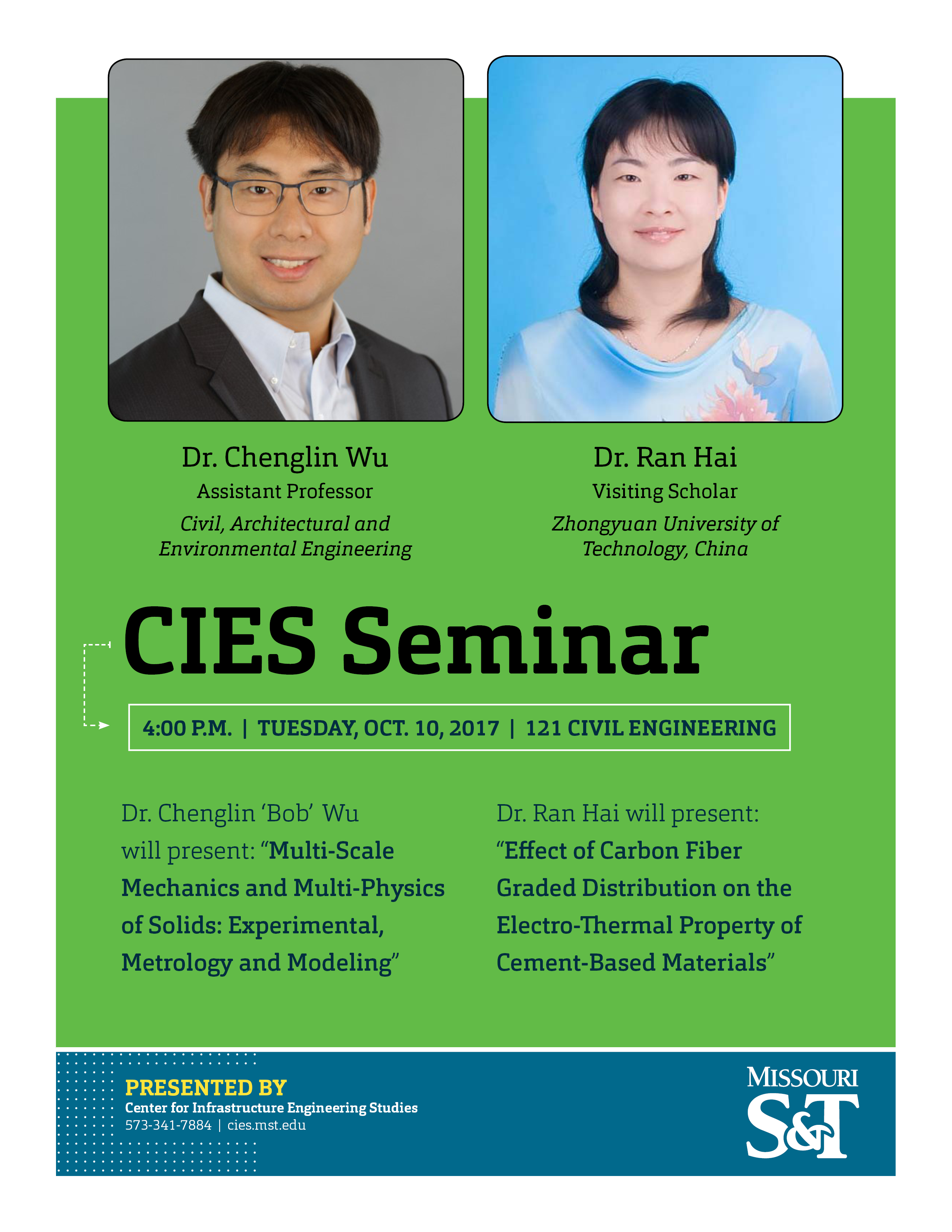October 2017 Seminar
CIES Seminar
October 10, 2017
4p.m. - 5 p.m.
121 Butler-Carlton (Civil Engineering) Hall
Presenter 1: Dr. Chenglin Wu
Assisant Professor, Department of Civil, Architectural and Environmetal Engineering
Topic: "Multi-Scale Mechanics and Multi-Physics of Solids: Experiment, Metrology, and Modeling"
Abstract: Multi-scale mechanics and multi-physics problems have gained tremendous amount of research interests recently in fields of civil, mechanical, microelectronics, and biomedical engineering. This presentation will focus on related interdisciplinary researches encompassing fundamental materials science, engineering mechanics, metrology, and nanotechnology. Two main topics will be presented here. The first one is to investigate the fundamentals of failure physics of micro-/nano-electronical devices, mechanical systems, and civil structures by combining advanced characterization techniques with modeling and accelerated testing. This area of research seeks basic understanding of ways to optimize materials and processing for improved system reliability and faster system development. The second one focuses on engineering of novel materials by altering their micro-/-nano structures. The aim is to develop applications in electronics, energy, biomedical engineering, mechanical engineering, and civil engineering to take advantage of the unique properties of these materials and structures.
Presenter 2: Dr. Ran Hai
Visiting Scholar, Professor of Civil Engineering Department, Zhongyuan University of Technology, China
Topic: "Effect of Carbon Fiber Graded Distribution on the Electro-Thermal Property of Cement-Based Materials"
Abstract: The carbon fibers graded distribution along the thickness of cement-based materials (CBM) was investigated to assess the potential value as a way to release thermal stress generated by conduction heat. Two groups of carbon fiber with equal weight dispersed in CBM which distributed in layered and gradient ways separately. The heat of electro-thermal layer (with carbon fiber) and non-electro-thermal layer (without carbon fiber) of the two kinds of specimens were contrasted, and the corresponding thermal stress value among each layers were calculated theoretically. The result indicated that comparing with the carbon fiber layered distribution, carbon fiber gradient distribution decreased thermal stress of adjacent layers from 15.42MPa to 5.21MPa. The reduction of thermal stress improved structural stability, by which could extend CBM’s service life.
REFRESHMENTS WILL BE PROVIDED

